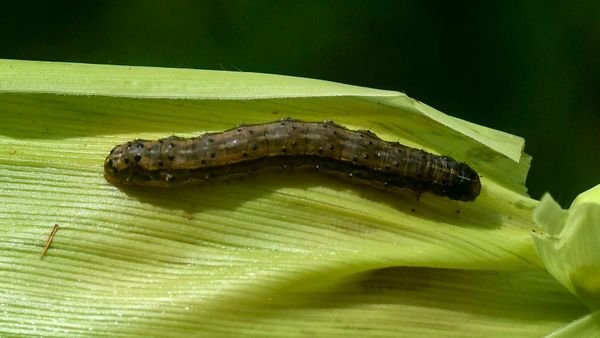
In the wild, bootlace worms can be found across various coastal regions, particularly in Europe. They’re often overlooked, lying hidden beneath rocks or sand, waiting for the right moment to strike. As the seasons shift, so do their patterns of behavior and activity. Understanding these changes can spark your curiosity about marine ecosystems and their rhythms.
Let’s dive into why you should pay attention to these amazing creatures as the seasons change and how it impacts their behavior.
What Are Bootlace Worms?
The bootlace worm is a fascinating member of the phylum Annelida. These segmented worms are known for their remarkable length, with some individuals reaching over 55 meters! Imagine a creature that could stretch longer than your living room. While they might look a bit like a tangled ball of spaghetti, these worms are vital to their ecosystems.
Bootlace worms are primarily known for their ability to regenerate. If they lose a segment, they can regrow it! This incredible skill not only helps them survive but also allows them to thrive in changing environments. They possess a gelatinous layer that helps them protect against predators, making them resilient in their underwater habitat.
You might not think much about where these worms hang out, but they prefer shallow waters and often find shelter in rocky crevices or among seaweed. Their unique habitat preferences can change with the seasons, which impacts their visibility and activity.
How Seasonal Changes Affect Bootlace Worm Activity
Just like how people tend to change their clothing with the seasons, bootlace worms adapt their behaviors based on environmental shifts. The temperature of the water influences their activity levels significantly. When water warms up in the spring and summer, bootlace worms become more active. They are on the hunt for food, which primarily consists of tiny organisms like plankton.
During these warmer months, you might find these worms emerging from their hiding spots more often. They tend to be more visible, wriggling through the sand or floating elegantly in the water column. This increase in activity is essential for their reproduction and feeding.
In contrast, as temperatures drop in autumn and winter, bootlace worms tend to become less active. They can go into a sort of hibernation mode, retreating into safer, deeper areas of the ocean floor. Cold water slows down their metabolism, meaning they conserve energy and resources for survival.
Feeding Habits During Different Seasons
Feeding habits play a crucial role in bootlace worm activity throughout the year. In the warmer months, when plankton populations are high, bootlace worms feast on these tiny critters. They use a unique feeding method, extending their bodies to capture food particles in the water.
Here’s the thing: the abundance of food isn’t constant. In colder months, the availability of plankton decreases. As a result, bootlace worms have to adapt. They may reduce their feeding frequency, relying on stored energy until conditions improve. This natural ebb and flow of feeding patterns is a survival strategy that many marine organisms employ.
Understanding these feeding habits can help marine ecologists monitor the health of ocean ecosystems. If you notice a decline in bootlace worm populations, it could signal larger issues within the food web, ultimately affecting other marine life.
Reproduction Patterns and Seasonal Timing
Reproduction is a vital aspect of bootlace worm life, and it has its own rhythm tied to the seasons. During the warmer months, when conditions are favorable, bootlace worms engage in a fascinating reproductive display. They can reproduce both sexually and asexually, which gives them flexibility in their breeding strategies.
In the spring and summer, the warmer waters trigger a reproductive response. These worms either release eggs into the water or fragment their bodies. When they fragment, each piece can become a new individual! This process ensures that when conditions are right, the bootlace worm population can increase rapidly.
As temperatures decline in autumn and winter, reproductive activities slow down significantly. Instead of actively reproducing, bootlace worms tend to focus on survival. This seasonal timing is critical in ensuring that they produce offspring when environmental conditions are most suitable.
Impact of Climate Change on Bootlace Worms
Climate change is a topic that affects us all, and bootlace worms are no exception. As ocean temperatures rise and weather patterns shift, these seasonal changes in activity can also be influenced. Warmer waters can lead to earlier spring blooms of plankton, which could disrupt the natural feeding cycle of bootlace worms.
Let’s not forget about pollution and habitat destruction. Coastal areas are often affected by human activities, which can alter the environment in which bootlace worms thrive. If their habitats are compromised, the food sources may decline, impacting not just bootlace worms but countless other marine species.
It’s important for researchers to study how bootlace worms react to these changes in order to protect marine ecosystems. By monitoring their population and activity, scientists can gauge the health of our oceans and identify shifts that may signal larger environmental issues.
Bootlace worms may not be the most glamorous figures in the ocean, but their stories are surprisingly rich. From their seasonal changes in activity to their extraordinary ability to regenerate, they remind us of the wonders of marine life. As we observe how they adapt to seasonal shifts, we gain insights into the health of our oceans and the delicate balance of nature.
So next time you think about the creatures living beneath the waves, take a moment to appreciate the unsung heroes like the bootlace worm. Their unique lifecycle and seasonal changes hold lessons not just for scientists, but for everyone who cares about our marine environments. By understanding how they thrive, we can all play a part in preserving the beauty and diversity of our oceans.
